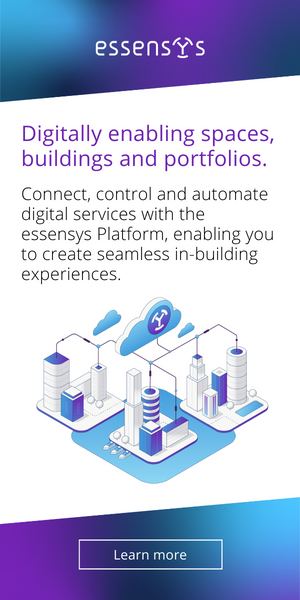Nice vs. Kind, Mentorship vs. Sponsorship: Know the Key Differences that Drive DEIB
Tama Huang, Chief Innovation Officer, CohnReznick

Imagine you’re driving to work, and you see a lone person stranded on the roadside with a flat tire. Do you ignore them? Stop to offer your sympathy and wish them well, then move along? Or do you pull over, get out of your car, and help change the tire?
There’s a difference between being nice and being kind. We know the nice thing to do in that scenario is to acknowledge and encourage the stranded motorist. But taking the time to get your own hands dirty to help – that’s kindness.
You may have heard this concept discussed in cultural contexts, where social media users have explored it as a difference between East and West Coast culture.
In the business world, the difference of nice vs. kind shows up most critically in mentorship vs. sponsorship. Mentorship is important to fostering the next generation of leaders, especially in an era where companies are losing people faster than they can hire and train them.
But today’s real estate industry has work to do beyond general retention. As the spotlight get brighter on diversity, equity, inclusion, and how they should work together to foster a true sense of belonging – collectively known as DEIB – more organizations are looking closely at their workforces and rethinking how they recruit, train, promote, and manage a workforce that is more diverse than ever before. That’s where true sponsorship is needed: People willing to really put in the work to break down barriers and help people up the ladder.
The challenge
Real estate is facing a human capital crisis. And it’s not just the current widespread difficulty in attracting and retaining talent, or the post-pandemic need to adapt business strategies to new employee and customer preferences. Beyond all of that, in this people-centric industry, all sectors need to cultivate and commit to a culture of diversity, equity, inclusion, and belonging.
While many industries struggle with closing diversity and equity gaps, real estate, as a longstanding, traditional industry, tends to lag further behind. At the point of entry, there’s roughly a 50/50 split between male and female employees, but as you look at more senior positions, the number of women, people of color, and other underrepresented groups drops exponentially. The 2021 Global Real Estate DEI Survey, for example, found that women represented 41% of North American CRE FTEs, and the percentage of women in executive management was just 21%. Only 29% of employees were people of color, and 15% at the executive management level.
Sponsorship: Industry movement starts with individual action
In order for the real estate sector to change these metrics, it must shift its thinking from nice to kind and its actions from mentorship to sponsorship.
Mentorship tends to be built from words: “I’m rooting for you. You’re wonderful. I hope you get promoted. My door’s always open, come talk to me any time you want.”
Sponsorship is putting action to the words. It’s putting your chips in on someone’s behalf, and using what you have to help them; opening the door from the inside and saying, “Come into this room, come pull up a chair at this table.” Specific examples may include:
- Adding them to a committee
- Mentioning them by name to give kudos when they’re not in the room
- An example that we heard, and will never forget: Not long after the murder of George Floyd, a company held a listening session with its employees of color, and was stunned to hear the kinds of things customers were saying to them. And so it was written specifically into leases: Customers and their guests must not engage in abusive, threatening, or harassing conduct, including racist conduct, toward employees.
A good starting point for leaders who want to do better in this area is to look in the mirror first: Understand your identity and what you perpetuate. Then, take action – even if just a small step or two in the right direction.
At an organizational level, start by assessing where you stand today, what your shortcomings are, and what you need to do to improve. Set specific, measurable goals. Once you have DEIB plans, put them out publicly for everyone to see and respond to; from what we’ve seen, that type of accountability tends to lead to the best results. Then, once they’re in motion, make sure to follow up, measure their results, and adjust accordingly.
Finally, along the way, make sure your plans and actions take intersectionality into account. Put simply, there are many forms of identity and diversity, and it’s important to understand how the effects of racism, sexism, ableism, and other forms of discrimination interact to create a person’s lived experience. Identities are not singular, survey-box categories; they are multilayered, and can change over time. Multiply your employees’ and customers’ intersecting identities, and make sure all of their unique needs are being met. And think outside the obvious, “what we see”: “Underrepresented groups” may also mean those coming from a two-year instead of a four-year college; those who grew up in a socioeconomically disadvantaged environment; immigrants, first-generation Americans, or first-generation college students; and countless other possibilities.
While this call to sponsorship especially applies to those in positions of seniority, anyone can (and should) play a part. DEIB is not a spectator sport: You can’t stand on the sidelines, cheering on those doing the work. We all have to be in it together, lifting others however we can.
More than “feel good”: Intrinsic improvement drives exponential reward
As the momentum toward stronger DEIB continues to build, real estate organizations that understand the value of these initiatives will best be able to attract talent and grow, and those that don’t will fall behind quickly and decisively. If employees are unhappy and unable to envision a future for themselves at an organization, then no amount of other improvements will ever be sufficient. It’s critical to truly elevate people and create a place where they can flourish.
And while building a healthy company culture should be motivation enough, it would be a mistake to think of DEIB as a strictly an internal, cultural matter: These efforts can also create significant returns. For example, McKinsey & Co.’s most recent analysis on “the business case for diversity” found that companies in the top 25% for gender diversity on their executive teams were 25% more likely to have above-average profitability than those in the bottom 25%; in the case of ethnic diversity, the difference was 36%.
The CRE sector has been talking lately about “flight to quality” and “flight to purpose”: Your product offerings need to be of the highest quality, offer the better amenities, and provide better returns to attract consumers. Today, it’s increasingly critical to make sure you’re also offering genuine quality and purpose when it comes to DEIB.
Saying what you do attracts talent; doing what you say retains talent. Sponsorship – stopping to help change that tire – is the key.
This Week’s Sponsor
As a leading advisory, assurance, and tax firm, CohnReznick helps forward-thinking organizations achieve their vision by optimizing performance, maximizing value, and managing risk. Clients benefit from the right team with the right capabilities; proven processes customized to their individual needs; and leaders with vital industry knowledge and relationships. Headquartered in New York, NY with offices nationwide, the firm serves organizations around the world through its global subsidiaries and membership in Nexia International. For more information, visit www.cohnreznick.com.
Read Next
 5/15/2025
5/15/2025
Tech, Talent and Transformation: 2025 Digie Finalists Announced For 27 years, Realcomm has presented the Digie Awards to acknowledge companies, real estate projects, technologies, and individuals that have advanced the commercial real estate industry through the strategic use of technology, automation, and innovation.
 5/15/2025
5/15/2025
Empowering Space Management with Data-Driven Visualization For effective CRE space management, it’s critical to centralize lease data, maximize rental square footage (RSF), improve energy efficiency and reconfigure spaces to meet changing needs.
 5/8/2025
5/8/2025
The AI-Powered Workplace Evolution: Redefining the Business Landscape In today's rapidly evolving business environment, the fusion of Artificial Intelligence (AI) and Workplace Management is revolutionizing the way organizations approach workspace optimization and operational efficiency.
 3/27/2025
3/27/2025
The Convergence of Edge Computing, Cloud, and AI in Building Automation and Smart Buildings In the built environment, we have seen the convergence of Operational Technology (OT) and Information Technology (IT), later expanding to include Workplace Technologies (WP).






%20(1)%20(1)%20(1).png)







